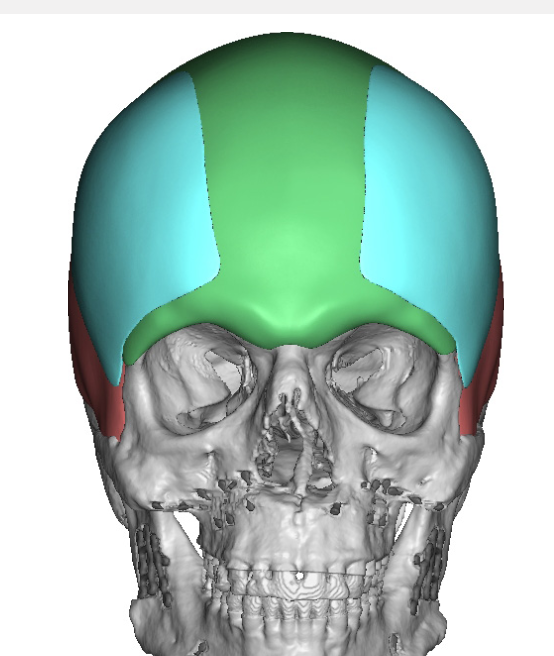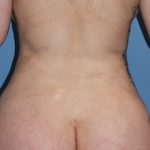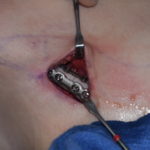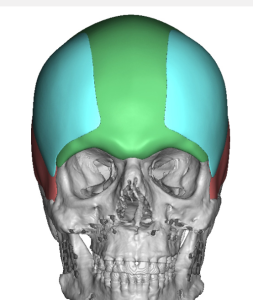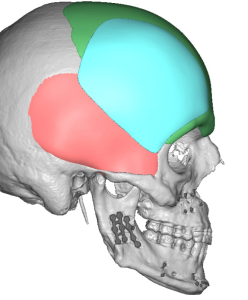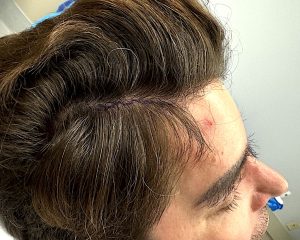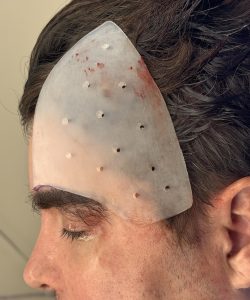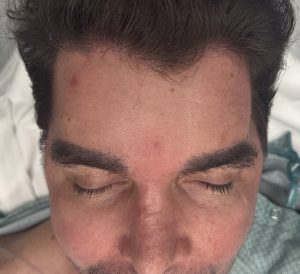A custom forehead-brow bone implant is the definitive procedure for masculinizing the upper third of the male face. As the largest single-piece custom facial implant, it can produce a dramatic transformation. Typically inserted through a scalp incision positioned near the coronal suture line, the implant’s placement is guided by the inferior border of the brow bones and the lateral bony temporal lines.
The Importance of Design in Forehead Implant Aesthetics
While precise placement is critical, the implant’s design ultimately defines the aesthetic result. A key element of this design is its footprint—particularly its width, which traditionally ends at the bony temporal lines and avoids extending over the deep temporal fascia. This is a conservative design choice that minimizes the risk of visible implant edges.
However, patients may later desire additional width to enhance the squareness of the forehead or blend more fully into the temporal region. This raises the question: does this require a completely new implant?
Case Study: Enhancing Forehead Width Through Overlay Implants
In this case, a male patient underwent successful placement of a custom forehead-brow bone implant through an incision located well behind the hairline. Although pleased with the result, he later expressed a desire for greater width that would extend into the temporal areas..
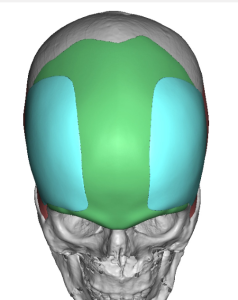
Surgical Technique
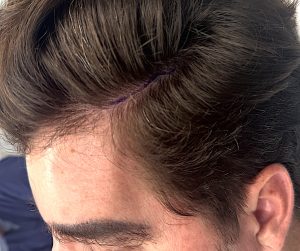
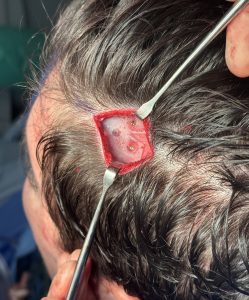

The Overlay Concept in Custom Implant Surgery
The overlay implant strategy is a unique advantage of custom implant designs. If the primary implant is well-positioned and provides a strong foundation, it is often more effective—and less disruptive—to build upon it rather than replace it.
Reopening a fully healed implant pocket carries risks, and inserting a larger implant may require a longer incision. By contrast, overlays offer a conservative yet powerful method to modify implant contours without undoing the benefits of a stable, well-integrated implant.
This case demonstrates that the expansion of an implant’s footprint can be elegantly accomplished through overlay design, as long as the dimensions and contours of the addition allow for such integration.
Key Takeaways
-
Squaring the forehead with a custom implant may accentuate temporal hollows.
-
Forehead width can be increased postoperatively with overlay widening implants.
-
High small hairline incisions provide discreet and effective access for implant placement.
Dr. Barry Eppley
World-Renowned Plastic Surgeon

